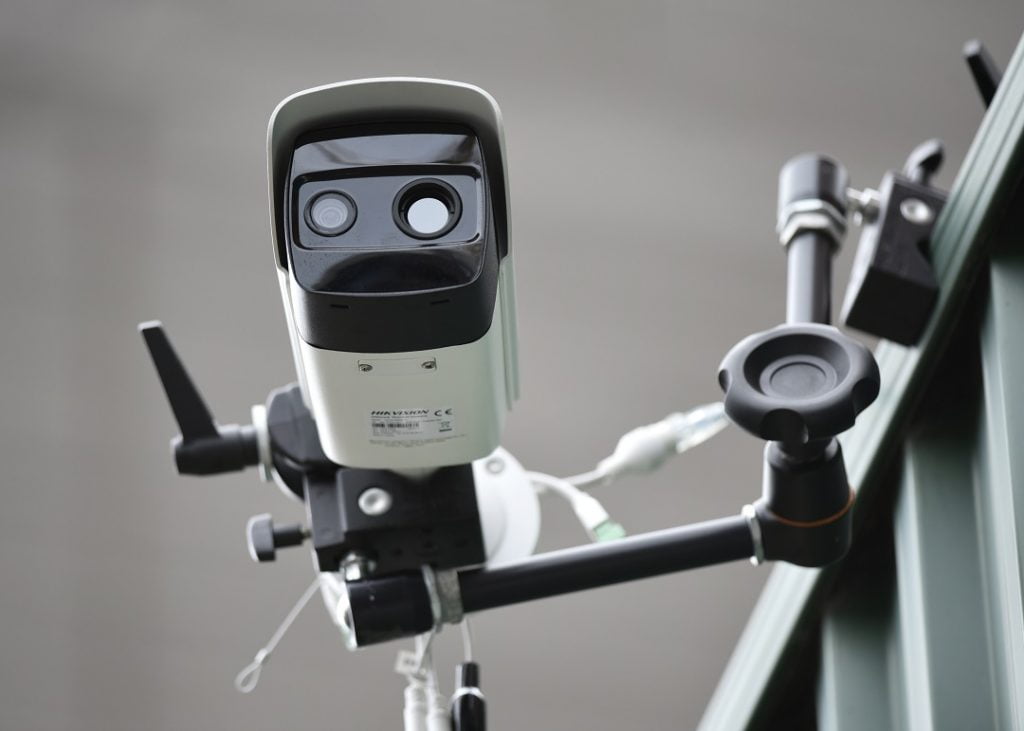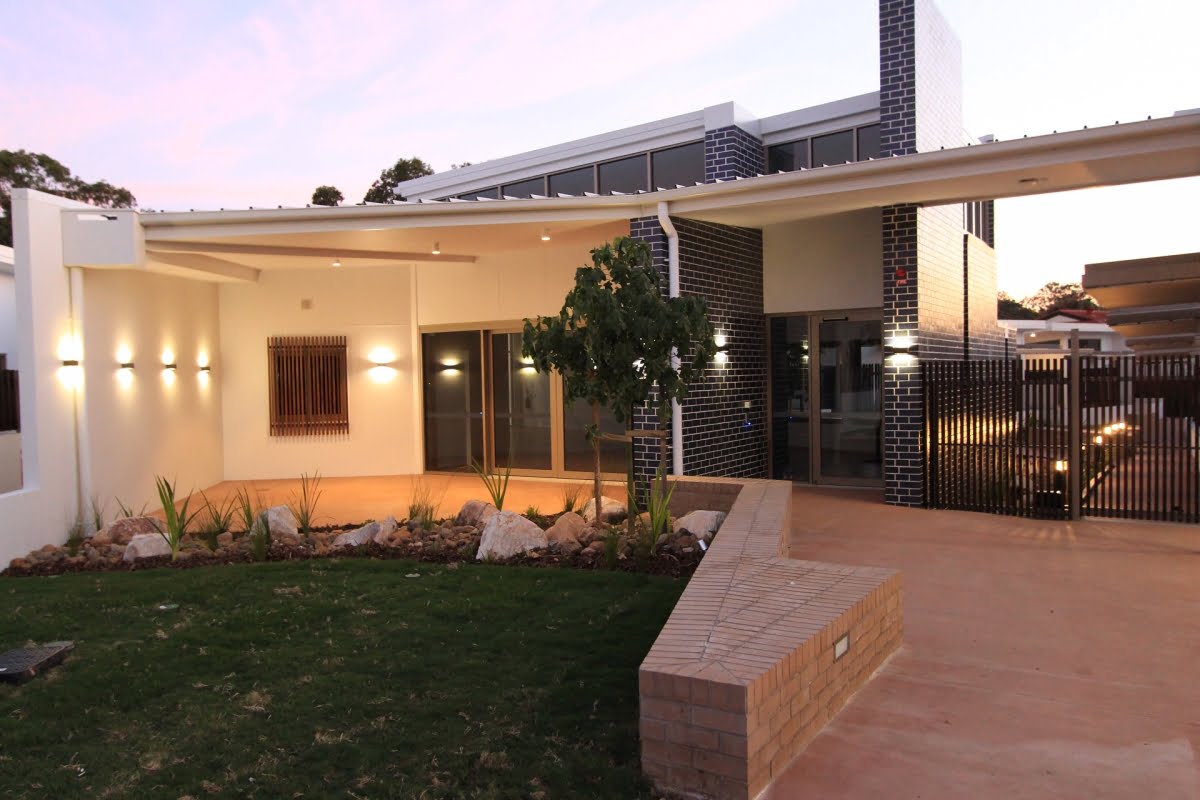Tiandy’s TC-C32GP 2MP H.265 bullet camera features Full HD resolution, a fixed 4mm focal length and fixed lens, adjustable WDR, 50 metre IR range and an integrated housing. Build quality is good, the design is pleasing and discreet – this Tiandy bullet is the smallest bullet camera we’ve ever put into the Magic Arm.
When the boys from NAS Australia offered to drop off 2 bullet cameras at the SEN office, we jumped at the chance to get a feel for their capabilities. This TC-C32GP day/night IP67 bullet camera is the smaller of the 2 Tiandy cameras. It’s a compact little unit that’s extremely simple to set up, with a solid feature set at this price.
In terms of overall features, the TC-C32GP bullet has a 1/2.8-inch CMOS sensor, delivering colour down to 0.0008 lux @ an aperture of F1.6 with ACG ON). These numbers are probably optimistic, given starlight without moon is 0.002 lux. In monochrome with IR activated, the camera delivers usable images down to 0 lux. Shutter speed is adjustable from 1s to 1/100,000s and this day/night camera features an IR cut filter with auto. There’s also digital WDR.
The angle adjustment bracket pan from 0-360 degrees, tilts from 0 to 75 degrees and rotates from 0 to 360 degrees. The lens is fixed at 4mm with a mildly fast aperture of F1.6, giving an angle of view of 87.6 degrees, which is ideal for my scene. The focus is fixed, too, which is less ideal, though it does make installation simpler.

There are a pair of LEDs operating at 850nm and giving a range of 50 metres. Operating temperature is from -35 to 65C, which is excellent, and the power supply is 6-7W, which is very economical. The dimensions of the camera are 208 x 82 x 81mm, with a weight of only 350 grams. There’s only one comms interface – an RJ45 10/100 self-adaptive Ethernet port.
Image settings include saturation, brightness, contrast, sharpness, adjustable by client software or web browser, image enhancement BLC/3D and DNR/HLC, there’s a privacy mask and smart defog. There’s also intelligent coding, intelligent image, intelligent alarm and alarm triggers via motion detection, IP conflict, MAC conflict and mask alarm. Compression options are H.265, S+265 and H.264 and bit rate is variable form 32k to 6Mbps.
There are some things you don’t get on this stripped down camera, including Audio I/O, alarm I/O, reset button, ROI, video analytics, early warning, picture overlay, audio compression, audio bitrate, network and network storage. But what you do get is tough – the body is heavy poly and cast aluminium and that IP67 rating means the camera can withstand being submerged in water to a depth of 1 metre. Just make sure you use an IP67-rated connector to connect the flying lead to your cable run.
Test Driving Tiandy TC-C32GP Bullet
We’re not using SEN’s server to drive this camera – instead we’re using a Tiandy 8-input NVR to wrangle the video stream via our NetGear router with a flick pass from the Dell Optiplex 9020 to the usual Benq monitor. There’s a second Tiandy camera on the NVR – a high end bullet. How much impact this setup has on performance isn’t easy to say objectively – there may be a little attenuation and latency compared with directly viewing the camera on a monitor connected to the NVR.
Before we start, there’s a downshift to be made – the last camera we tested was the Axis 3245-LVE dome. The 3245-LVE is a camera for high security applications. This fixed lens, fixed focus Tiandy bullet plays on a different park – it’s designed to very affordably monitor shallower scenes with less challenging environmental inputs. Typical applications would include commercial, retail and residential applications with a required depth of field of up to 10 metres and situational awareness further out.
The most complex part of setup is getting the twisty ties off a new 20 metre CAT-6 cable without glasses. The angle of view with a fixed 4mm focal length and a 1/2.8-inch sensor is close to perfect for our street scene – a bit less than 90 degrees. My first reaction on seeing the live stream is to tweak focus but that’s not an option – plug and play is the name of this game and I can’t zoom, either. The fixed lens means installers will need to think slightly longer about installation and select a mounting point that puts the sweet spot between hyperfocal distance – around half a metre – and nominal infinity, which pixel spread and processing artefacts set at about 15 metres.

Colour rendition is strong, exposing for interior, no trouble with face recognition. Distance to far wall is 12 metres.
I look at the office view first. Strengths include vivid colour rendition especially of reds and blues, mild barrel distortion – it’s probably about 4-5 per cent. I have face recognition inside to about 8 metres, but you can see there’s over exposure in the kitchen doorway from around 70,000 lux of afternoon sun. Chromatic aberration is very well controlled, which is a strength of fixed lenses. I can see none, even when pixel peeping. The image has characteristic softness that is consistent all the way through the scene.
Next, I take the Magic Arm up the stairs. Our street scene is not the easiest – it delivers full sun in the morning, bright and dark areas in the middle of the day, deep shadow in the afternoon and multiple colour temperatures from street and ambient lighting in the evenings. The Tiandy shows some processing noise, a little stepping of the image stream that might be down to the way we are viewing the camera as it’s not evident with the monitor directly connected to the NVR, and latency of about 350ms, which is quite good at this price point.


Face recognition out to 12m is no problem – you can see how well the camera handles motion blur in the first image – scooter pilot is tight at 25kmph.
There’s softness deeper into the scene, as well as some over exposure – the camera is exposing for the shaded foreground in this part of the test but overall, the scene is reasonably balanced. Looking at the scene I don’t expect I’ll be able to get fast moving plates. I have plenty of situational awareness around vehicles – colour, make, model – but my expectations are born out. Closer in I have no trouble with faces and other details, including clothing, accessories, footwear. A cyclist goes by on the opposite pavement and I get clothing and accessory details.
I notice there’s some slight blurring around fast moving leaves and branches in the foreground of the scene – because we’re in shadow and exposure is set to auto, this is probably a combination of slow-ish shutter speed and tone mapping artefacts. When it comes to handling scenes with variable lighting, the Tiandy bullet does well as the afternoon goes on. There’s some over exposure but it’s well controlled.


I can’t get 40kmph plates but there’s plenty of detail. The softness deeper in is down to the fixed lens and the resolution spreading pixels past 25m.
During the day I try to limit exposure in settings but with WDR activated the scene darkens in a way I’m not happy with for our application. Over exposure in a bright background is a price worth paying for a brighter foreground, in my opinion. As the afternoon wears on, the image stream stays very consistent. By now I’ve decided I’m happiest with performance out to 10-12 metres when it comes to recognition pedestrians and vehicles, but the depth of field remains useful as light fades.
I still don’t get moving plates but when it comes to pedestrians, I’m getting plenty of detail, much of which is accurate to 40 metres – details like gender, height, clothing colour, show colour, hair colour, gait, general behaviour, etc. Something I notice as workers a couple of doors up go in and out from their work vehicles later in the afternoon is that there’s a little blur being dragged behind them. Later, an electric scooter whizzes down the street and I get good but soft detail of the rider.


At night in colour the image holds together really well. I’m not getting faces or plates but the image is bright and even and there’s loads of useful detail.
As night falls, the image stays consistent – it doesn’t get any sharper but doesn’t weaken, either. In fact, if anything it gets brighter and depth of field increases. There’s a point at which vehicles and pedestrians start to drag a noticeable tail of blur – around 7pm – but it’s getting dark between the towers by then. The camera is still very bright, but the image is becoming strained by the digital processing going into maintaining it.
There’s some increase in noise and softness once the light has well and truly gone. At this point I’m not getting court admissible faces close to the lens and fast-moving vehicles can no longer be as clearly identified. As the light goes, the tone from the low kelvin sodium lights at the end of the street become more noticeable. Regardless, there’s a surprising about of useful detail and the sky at the end of the street remains a lovely cornflower blue even through it’s dark outside.


IR performance is comparatively strong, too, with useful detail of pedestrians and vehicles.
And there’s no sign of the camera wanting to go over into night mode, either, even though I measure just 5 lux out the front. In the end I push the little bullet over into night mode with IR activated. In a busy scene like this IR has advantages and disadvantages – the array certainly has good reach – it goes all the way out into general situational awareness – well past 25 metres.
With IR activated there’s some flare from nearby objects and I don’t get faces or plates. Regardless, in applications characterized by complete darkness, IR gives situational awareness you would not otherwise get, including clarification of intrusion, presence of vehicles, attempts at intrusion and more.
Conclusion
Tiandy’s TC-C32GP Bullet Camera is an economical surveillance device designed to be seriously robust and very easy to install. It’s ideal for applications with a depth of field out to about 12 metres – from 4-8 metres is the sweet spot. Past 12 metres things start getting soft, although the image stream remains useful in terms of situational awareness. While outright performance is modest and the feature set is relatively lightweight, this compact camera delivers its peak performance very consistently, managing variable light and failing light well, and easily holding colour under 5 lux. Performance in low light is a strength and the IR array has excellent spread and reach.
Features of Tiandy TC-C32GP Bullet Camera
* 1920 x 1080p @30fps
* Compression – S+265/H.265/H.264
* Min. illumination in colour: 0.0008 lux @ F1.6
* Smart IR, 50 metre IR range
* Operating conditions -35 to 65C, 95 per cent humidity
* POE, IP67
* Smart Codec/image/alarm.











How to factory reset this camera